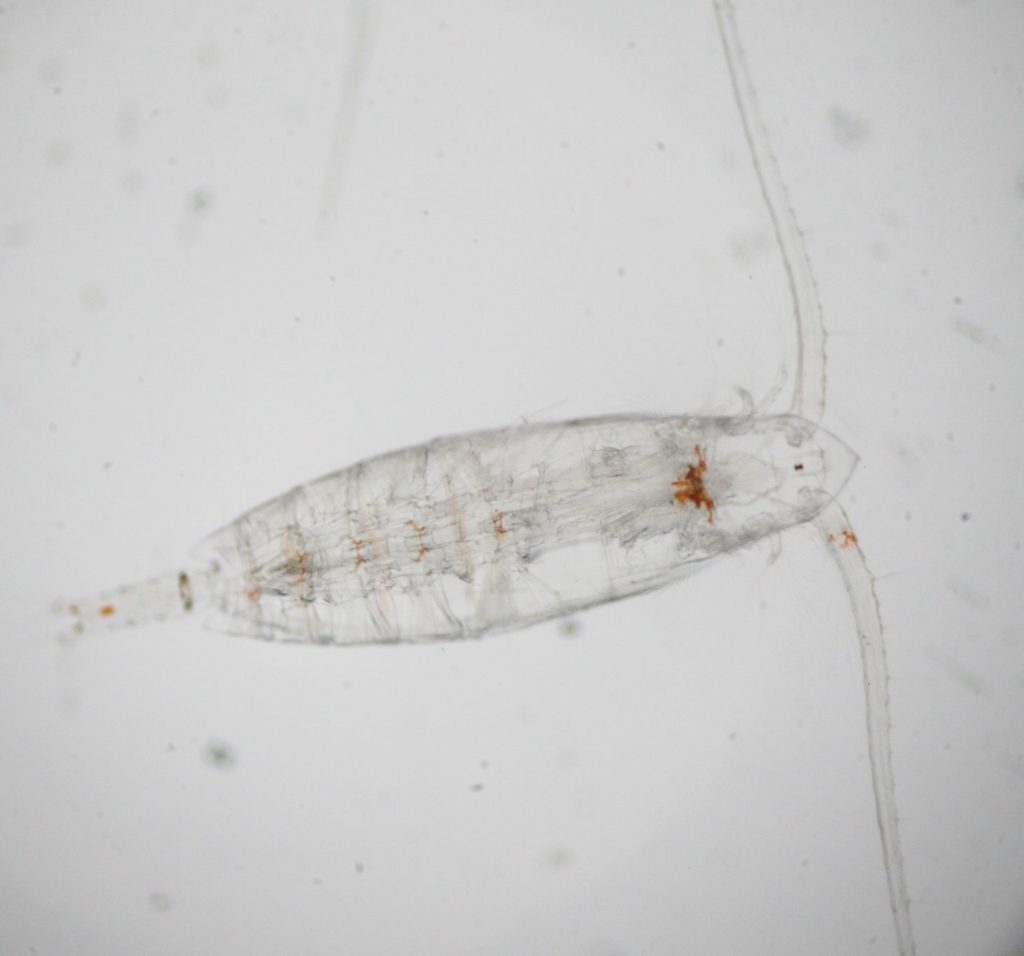Copepods!!

January 8 2019 (Note: this is #9 in a series of posts describing my NSF-sponsored fieldwork in Antarctica aboard the Laurence M. Gould).
I’m on my 9th post about this copepod project and I’m finally showing my first picture of a copepod! It sounds a little strange, but the logistics of working here are pretty extreme. It took a couple days to get on ship, then several days for crossing, then a couple days on station, then more transit and whale/bird surveys. It takes about 10 days from the time I left the door of my house to the time I could take a first sample.
The picture above shows Calanoides acutus, one of the species I’m targeting in this study. This copepod is mostly herbivorous, foraging on algae. Over the long polar winter, there isn’t much light for algae to grow, so there isn’t much food for this “vegetarian.” it survives by moving into deep water and going in “hibernation” (entering a dormant state called diapause). I’m comparing it to other copepods that have a more omnivorous mixed diet and manage to stay active during the winter.
It’s taken me a couple of days to get a feel for identifying these different copepods. I need to be able to tell them apart when looking from the top (dorsal view like above) and from the side. It’s one thing to be able to do this under the microscope, but to speed up my sampling, I’m also trying to get better at identifying them with my naked eye, when they are still swimming around in the sample bucket. Since they are small (smaller than a grain of rice) and almost transparent, this is tricky. Slowly I’m learning to pick out subtle differences in shape and color.